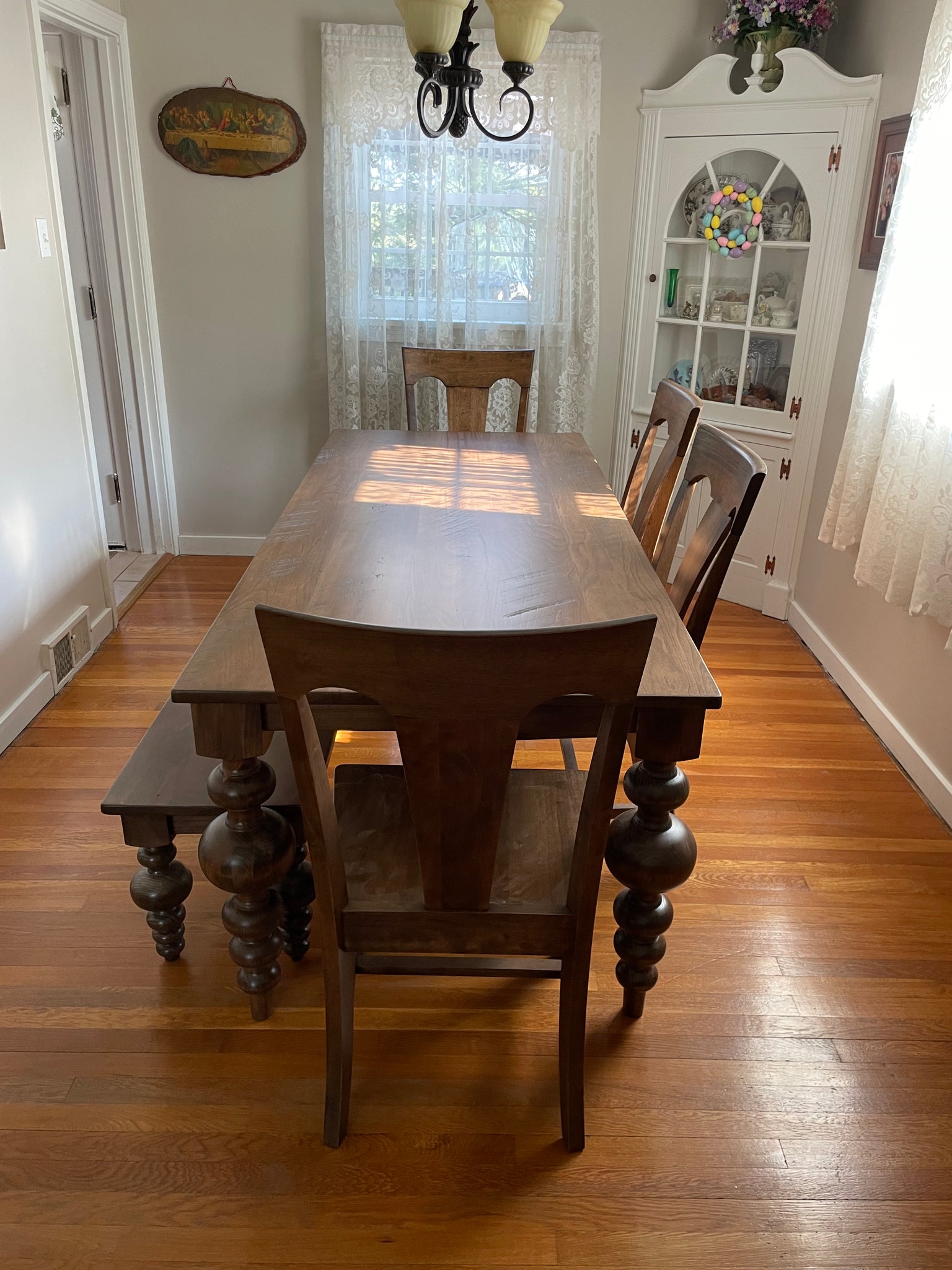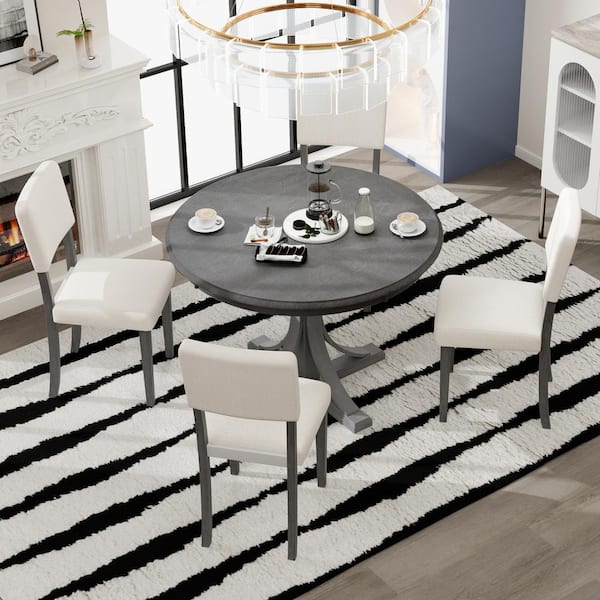The Best Materials for Durable and Elegant Dining Room Table Legs
From Standard to Modern: Discover the Ideal Dining-room Table Legs for Your Design
The option of dining-room table legs plays an essential role in specifying the general personality of your area, bridging the void between typical workmanship and modern appearances. While traditional designs such as cabriole and transformed legs evoke a feeling of timeless class, contemporary styles like hairpin and geometric alternatives provide a possibility for striking visual passion. Reviewing the ideal balance in between these styles needs a nuanced understanding of your existing décor and individual taste. As you think about these components, the concern continues to be: how can you flawlessly integrate these varied leg designs to develop a harmonious dining experience?
Comprehending Table Leg Styles
The range of eating area table leg designs can dramatically affect both the aesthetics and functionality of the space. Each leg style adds special aesthetic aspects and functional functions, satisfying varied layout choices and usage demands. Understanding these styles is crucial for selecting the appropriate eating table that lines up with your general interior decoration vision.
For circumstances, tapered legs supply a tidy, traditional look that can boost an area's sophistication, while pedestal bases provide security and make the most of legroom, making them perfect for smaller rooms. Hairpin legs, a hallmark of mid-century modern-day style, introduce a commercial style, permitting an airy, open feel. Trestle legs stimulate rustic appeal, providing durable support and a feeling of timelessness.
Wooden legs can bring heat and texture, whereas steel alternatives typically share a sleek, contemporary ambiance. Inevitably, comprehending table leg designs is crucial for developing a cohesive dining area that mirrors individual style while making sure usefulness and comfort.
Conventional Table Leg Options
When picking eating room table legs, conventional alternatives often embody ageless style and workmanship. These designs reflect an abundant heritage and a commitment to quality, making them excellent for those who value traditional looks.
Among the most famous traditional leg styles is the cabriole leg, characterized by its stylish rounded shape. This style commonly includes attractive makings and is most generally located in Queen Anne and Chippendale furnishings. An additional preferred alternative is the transformed leg, which flaunts a collection of smooth, rounded forms that supply a traditional look while preserving security.
Furthermore, the straight leg, while simple, offers a basic and tough framework that can mix effortlessly with a range of tabletop styles. For those drawn to ornate describing, claw-and-ball feet legs stimulate a sense of splendour and can serve as a spectacular prime focus in any kind of eating area.
Lastly, pedestal bases, although not purely legs, supply an alternative traditional alternative that enables adequate legroom and can be wonderfully carved. Each of these typical leg styles adds to the overall setting of an eating space, marrying feature with aesthetic allure.

Modern Table Leg Styles
Modern table leg designs use a diverse array of styles that stress innovative materials and clean lines. These designs frequently prioritize capability while serving as striking prime focus within an eating space. Minimal aesthetic appeals prevail, with legs crafted from materials such as metal, glass, and engineered wood, which add to a airy and modern feeling.
One prominent Homepage layout is the hairpin leg, defined by its slim, tapered framework that provides stability without frustrating the table top (dining room table legs). This style is usually discovered in mid-century modern-day furniture and can effortlessly match numerous dining table forms. An additional trend is using geometric forms, where legs might take on unbalanced or angular forms, adding visual passion and a touch of artistry

Blending Designs for Distinct Spaces
Often, house owners look for to create one-of-a-kind eating rooms that show their individual design by blending numerous style components. This method enables the consolidation of diverse visual appeals, resulting in an unified yet distinct environment. For instance, matching a rustic wooden table with smooth, contemporary metal legs can develop a distinctive contrast that elevates the room's browse this site total allure.
Additionally, integrating vintage table legs with modern table tops can stimulate a feeling of history while preserving a modern sensibility. Such combinations not just showcase individual preference yet likewise encourage imagination, allowing homeowners to curate an area that really feels both individual and inviting.
Color plays an essential role in this mixing procedure; choosing table legs that enhance or contrast with the existing color scheme can enhance visual rate of interest. For example, whitewashed legs can soften the boldness of a dark table surface, producing a balanced visual.
Tips for Choosing the Right Legs
Picking the right table legs is essential for attaining both performance and aesthetic charm in your dining space. Begin by considering the overall style of your room. Standard settings benefit from legs that feature complex makings or transformed styles, while contemporary spaces may require streamlined, minimalist styles.
Next, assess the height and security of the legs. dining room table legs. Typical dining tables vary in between 28 to 30 inches in height, so make sure the legs complement this dimension for comfort. In addition, robust materials, such as wood or metal, can enhance security and long life
Review the leg form as well-- options consist of directly, tapered, or stand layouts. Straight legs offer a timeless appearance, while conical legs can include a touch of sophistication. Pedestal bases give adequate legroom and are suitable for smaller areas.
Conclusion
In recap, choosing the ideal dining-room table legs calls for cautious consideration of both modern and conventional designs. Standard alternatives such as cabriole and turned legs offer ageless sophistication, while modern-day styles like hairpin and geometric shapes provide a contemporary touch. By integrating leg style, elevation, and product with the general decoration, a natural and inviting ambience can be accomplished. Ultimately, the chosen table legs ought to reflect the desired visual, enhancing the eating experience within the area.
The selection of eating room table leg designs can considerably influence both the aesthetic appeals and functionality of the space. Eventually, understanding table leg styles is crucial for creating a cohesive dining location that shows personal design while making sure usefulness and comfort.One of the most renowned traditional leg designs is the cabriole leg, identified by its elegant bent shape. Straight legs use a traditional look, while tapered legs can add a touch of style.In my website recap, selecting the perfect eating space table legs requires mindful consideration of both contemporary and standard styles.